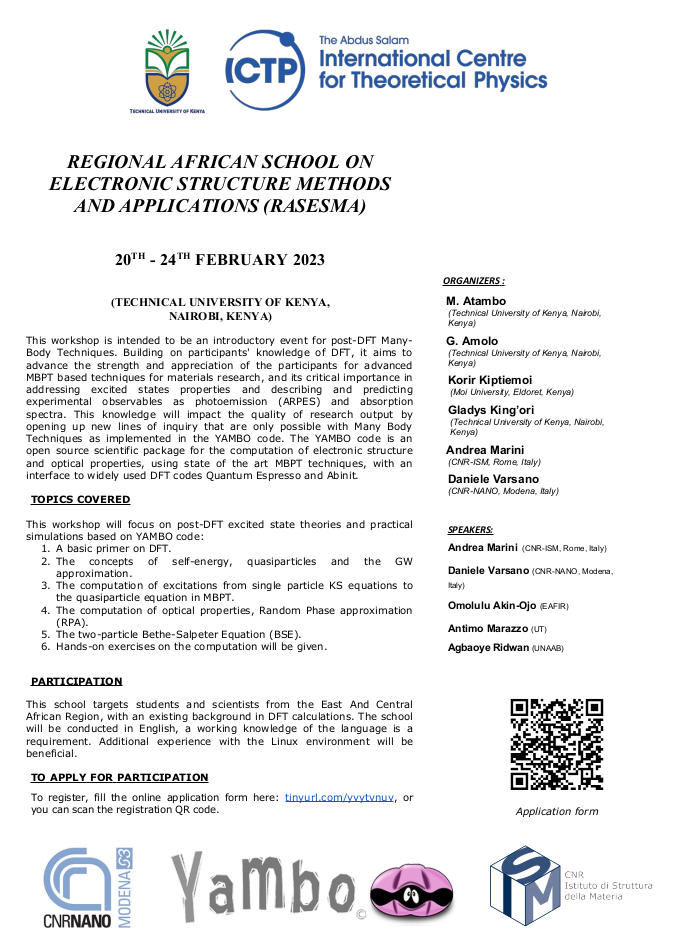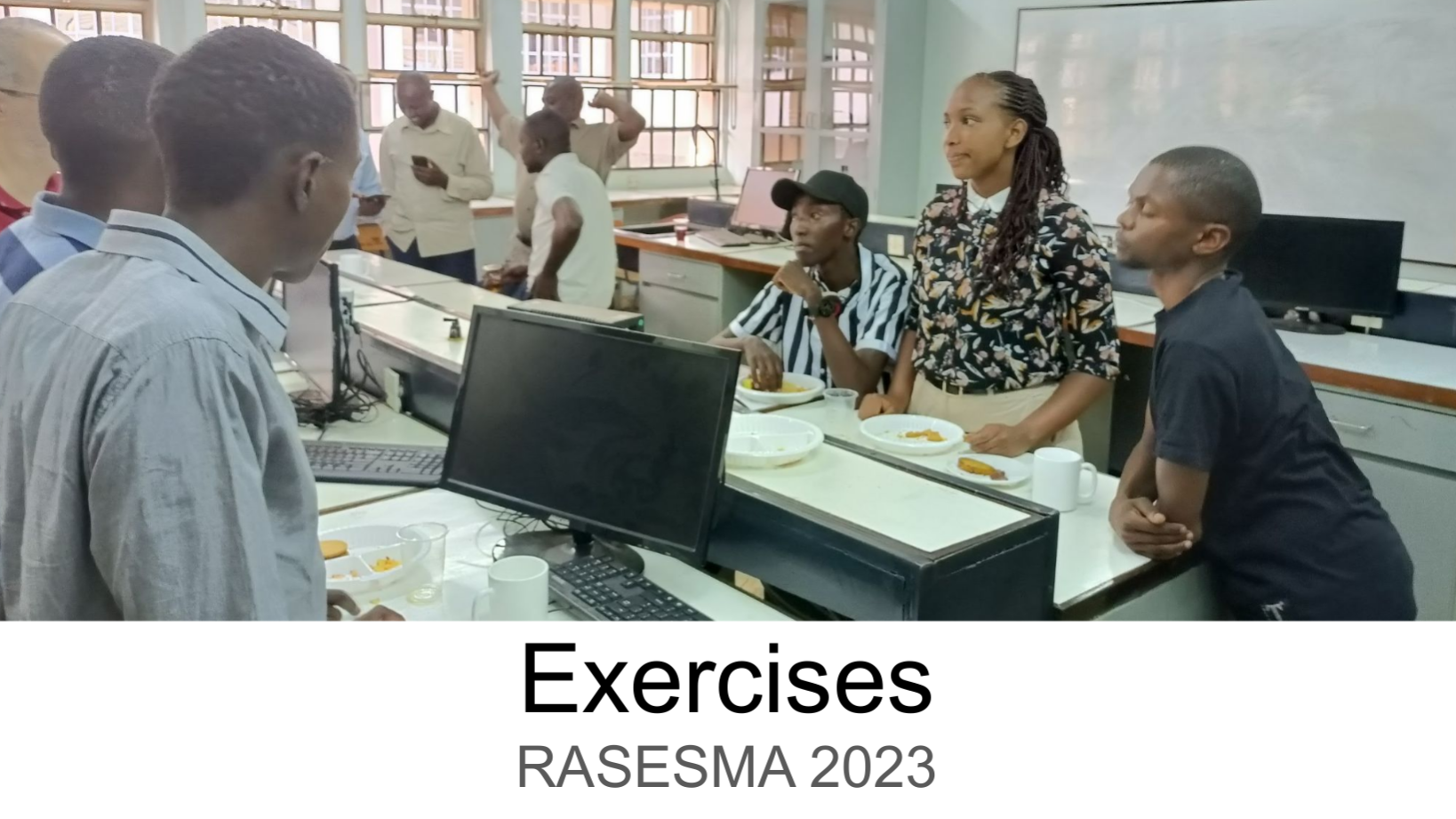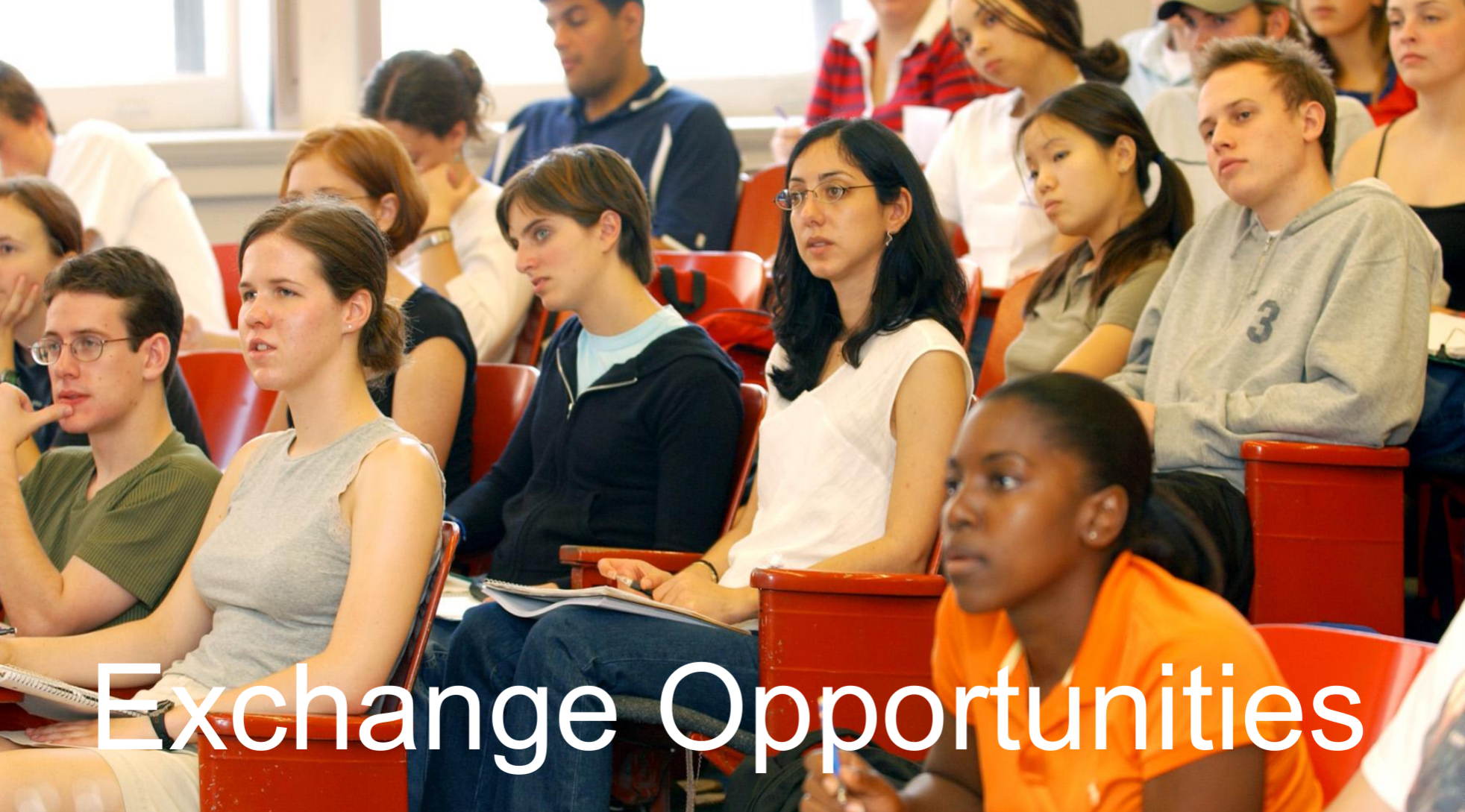The Venue and How to reach it
The event will be hosted by the Technical and Applied Physics Department, school of Physics and Earth Science in lab N211 on the second floor of the N block, the first building on your left on entering through the public entrance on Workshop Road. Please follow the following navigation map link to arrive a the university. Access to the university requires registration with security at the gate, your destination will be N301, 3rd Floor, N-Block in the Physics Department, there is no access restrictions to enter the laboratory.
Setting up Yambo, QE and the tutorials
To be able to follow the school you need a running version of the yambo/QE codes, and the files and databases needed to run the tutorials.
Detailed instructions about the code(s) installation can be found in this dedicated page.
After installing the code you can setup the tutorial files following the instructions provided in the Tutorial files page.
Sunday 19 Feb
For those who will be already in Nairobi we will have a get together & Yambo installation session at the YMCA South C starting from 18:00.
If you are interested drop an E-mail at rasesma2023@tukenya.ac.ke
Monday 20 Feb
Tuesday 21 Feb
Wednesday 22 Feb
Thursday 23 Feb
Friday 24 Feb
Afternoon
| Time |
Tutorial |
Tutor(s)
|
| 13:00 - 15:00 |
Students projects discussion |
The Organizers
|
| 15:00 - 15:30 |
Break
|
| 15:30 - 17:00 |
Students projects discussion |
The Organizers
|
After the School
Basic (and slightly advanced) studying material
Quantum Mechanics
- Harmonic oscillator
- Second quantization
- Electron-Phonon
- Photons
- (...)
- Many-Particle Physics, G.D. Mahan, Chapter 1
- Modern Quantum Mechanics, J.J. Sakurai, Chapter 1-2
Math
- Ordinary differential equations (1st and 2nd order)
- Complex analysis
- Fourier and Laplace transformations
- Basic functional analysis
- Mathematical methods in the physical sciences M.L. Boas
- Time-Dependent Density Functional Theory: An Advanced Course, Appendix A, Engel, Eberhard / Dreizler, Reiner M.
Theoretical Approaches
- Many-Body Perturbation Theory
- Density Functional Theory
- Density Functional Perturbation Theory
- Time-Dependent Density Functional Theory
- Many-Body Approach to Electronic Excitations F. Bechstedt
- Electronic excitations: density-functional versus many-body Green's-function approaches G. Onida et al, Rev. Mod. Phys. 74 (2002)
- Phonons and related crystal properties from density-functional perturbation theory, S. Baroni et al, Rev. Mod. Phys. 73 (2001)
- Application of the Green's Functions Method to the Study of the Optical Properties of Semiconductors G. Strinati, La Rivista del Nuovo Cimento (1978-1999) volume 11, pages1–86 (1988)
- Density Functional Theory: An Advanced Course, Engel, E. / Dreizler, R. M.
Approximations
- Hartree-Fock
- Random-Phase Approximation (Linear Response)
- GW/BSE
- Many-Body Approach to Electronic Excitations F. Bechstedt
- Application of the Green's Functions Method to the Study of the Optical Properties of Semiconductors G. Strinati, La Rivista del Nuovo Cimento (1978-1999) volume 11, pages1–86 (1988)
More references
Exercises
The following exercises should be possible after having studied the basic concepts described described in the Studying Material section.
(Some) Exchange Programs
Here some Exchange programs where students and lecturers can apply. Please note that all these programs can be accessed via a selection.


